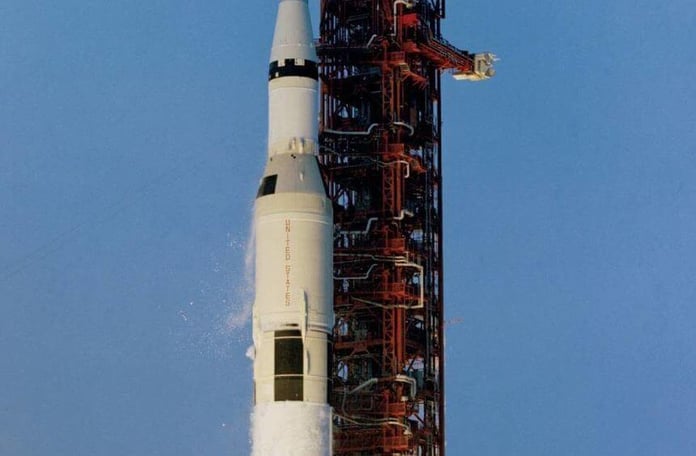
Houston. Frances Northcutt learns of the situation on board the “Apollo 13” when a journalist calls. There was an explosion in an oxygen tank in the space capsule, and the values are falling dramatically. The three astronauts John Swigert, Fred Haise, and James Lovell are more than 300,000 kilometers away from Earth at this point – and in acute danger to life. Northcutt, then one of the few women in the service of the US space agency NASA, is on the way to the control center in Houston, Texas, as soon as possible.
Two days earlier, on Saturday (April 11th) 50 years ago, the “Apollo 13” had launched onboard a “Saturn V” rocket from the Cape Canaveral Spaceport in Florida. The first manned moon landing was only a few months ago, there had already been a second, and two astronauts of the “Apollo 13” are now also supposed to run over the moon. The commander of the mission is Jim Lovell (92), with him Fred Haise (86) and Jack Swigert (1931-1982) onboard.
Emergency programs
NASA moon missions seem almost routine at this point – until there is an explosion in the oxygen tank about 56 hours after the launch of “Apollo 13”. The astronauts hear a bang and notice a vibration, a warning light goes on. Swigert informs the control center in Houston, his sentence goes down in history: “Houston, we’ve had a problem here.” The mathematician Northcutt had written computer programs for precisely this case, as she did at an event of the “New York Times” in New York tells. “Then we did what the programs were designed for, we calculated the return to Earth.”
The intended moon landing is canceled immediately. The control center asks the astronauts to change to the spider-legged “Aquarius” lunar module attached to the mother spaceship, where there is still enough oxygen. Meanwhile, the control center calculates: The lunar module is initially a lifeboat, but would not survive the re-entry into the earth’s atmosphere, so the astronauts have to go back to the mother spaceship. How much electricity is left after the explosion, how much oxygen and how much water?
“We suddenly had a lot of problems, but the most outstanding was the risk of carbon dioxide,” Commander Lovell later recalled. “That could have killed us.” The control center passed on an improvised solution: “They told us how we could seal the lunar module with tape, plastic, and cardboard.” The defective part of the spaceship is blown off, then the astronauts switch back into the capsule and navigate back to Earth with a complicated maneuver.
On April 17, 1970 – after four anxious days – the team landed near American Samoa in the Pacific Ocean. NASA now speaks of a “successful failure” – and mathematician Northcutt is even convinced that “Apollo 13” was the most successful of all “Apollo” missions, even before “Apollo 11” was manned on the moon: “Apollo 13 was the most successful mission because it made it clear that we can survive a devastating emergency. ”TEH © Mannheimer Morgen, Saturday, April 11th, 2020








